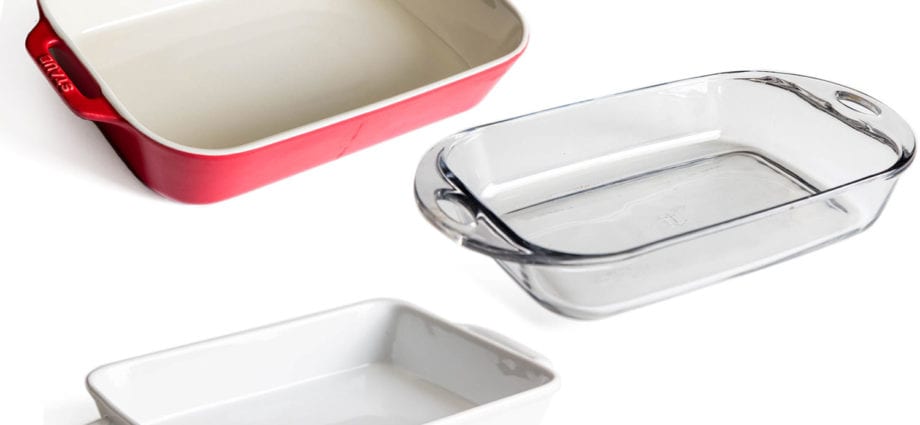Baking tins are made from a variety of materials. And depending on the goals and objectives, the dish may turn out to be excellent, or it may lose its shape when shifting or not cook at all.
The materials from which the baking dishes are made have different properties of transmitting and retaining heat, so the baking will stick to one form, and it will go well from the second. What form should you prefer?
Metal forms
These forms have existed for a long time, and despite their shortcomings and new fashion trends, they remain very popular with all housewives. They heat up quickly and cool down quickly. Often such designs are made detachable – which is very convenient for the beauty of baking.
Sometimes metal molds have a non-stick coating. Without such a coating, it is better to grease the mold with oil so that the baked goods do not burn.
Metal molds are easily deformable and damage the surface, so you cannot cut and serve food in them.
Glass molds
In this form, it is very convenient to cook dishes in which the layers are beautifully visible – lasagna, casserole. In glass, the cooking process takes a little longer, but all layers and ingredients are baked evenly. In a glass form, you can serve the dish directly to the table, as well as store it in the refrigerator until the next day, covered with a lid. Warming up in glass is also quick and convenient.
Ceramic molds
Ceramic molds combine the properties of metal and glass. They heat up slowly and bake the dish and dough evenly, and the first courses turn out equally well in ceramics. Therefore, ceramic molds are versatile and best selling.
The disadvantage of ceramics is fragility against the background of a large size, often a dish in its usual proportions looks awkward in it.
Silicone forms
Mobile and easy to store, relatively inexpensive and practical silicone molds have captivated the hearts of more than one housewife. The dish does not stick in them, it bakes quickly.
But due to the mobility of silicone, it is undesirable to buy too large forms. The second drawback is the lack of confidence in the quality of silicone: a good shape cannot cost a penny.
Silicone molds are used not only for baking, but also for freezing desserts and hardening jelly.










